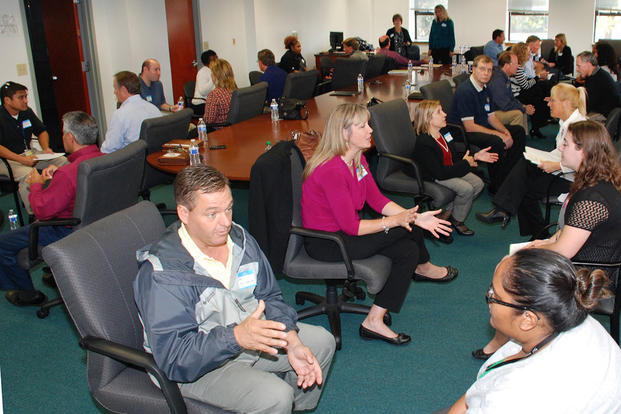As an employer focused on hiring and developing veteran talent, you likely know the basics: Customize your sourcing and recruiting strategies, create a unique hiring and onboarding program, develop a veteran resource group, and find opportunities to recognize your veteran employees for their service to our country.
There are also creative, inexpensive, and impactful ways you can help your veterans find a support system, or enhance the support network they have in their personal and professional lives.
Why veterans need a support network
The support system in the military is well-developed: From their first day at a new duty station (if not before), the service member is surrounded by “battle buddies” and sponsors. As one soldier describes it, “Wherever I am, I have someone in front of me, to each side, and behind me. That’s how supported I feel while in uniform.”
Leaving their military service, veterans lean heavily on their family and other veterans. Many veterans also reach out to government and community resources, such as the Department of Veterans Affairs (VA), Veterans of Foreign Wars (VFW), local groups aligned with their branch of service or career transition, and online communities focused on military-to-civilian career transition.
How Can You Help?
You have a unique opportunity to build or encourage additional avenues of career and personal support for your veteran employees. Particularly if your company culture promotes values of collaboration, investment in your team, healthy and open communication flow, you can reinforce your commitment to your veteran employee’s service and their contribution to your organization by understanding specific channels of support for veterans.
Ways you can support your veteran employee:
- At work – Creating formal and informal opportunities for mentoring at work helps your veteran employees to feel included, giving them an opportunity to spend time with like-minded individuals and build relationships with professionals (civilians and veteran) who can guide them through the complexities or challenges of their career. A successful mentoring program can live inside your Veteran Resource Group, or as a standalone program, or can be administered through a third-party organization, such as Veterati, a national leader in civilian-to-veteran mentoring.
- In the community – Hopefully your veteran employees are already connected to local groups for emotional support, community involvement, or other needs. As their employer, you can incite this engagement, by encouraging your veteran and civilian employees to dedicate a certain number of hours per month to a local charity, or serve on boards and committees. Push them to join an organization in an area that aligns with their talent or passion. For instance, if you have veterans on your team who are athletic, they might consider joining Team Red, White and Blue, which organizes sports-related activities.
- As a leader – The leadership skills your veteran employees developed in their military careers are not left behind when they take off the uniform. Encourage your veteran employees to showcase their expertise, skills and character traits by sharing their training and talents. This builds their position as a leader in the company, and will encourage others to seek them out for mentoring and collaboration. Sometimes the best way to receive support is by giving it to others.
As your veteran employees navigate the ups and downs of their civilian career, encourage them to share their concerns and questions. Asking for help is a sign of strength in the civilian work place, but not so much in the military. Connecting your veterans to other veterans – inside the company and externally – will give your veteran employees a sense of community around them and will remind them they are not alone in their career journey.





